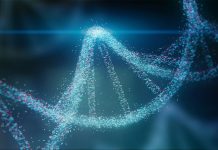
There’s exciting news for people who have suffered serious muscle damage: a new technology developed by Evolved.Bio, a pioneering startup, is offering a groundbreaking way to regenerate muscle tissue.
Normally, biotech companies tackle this problem by growing tissue replacements in a lab, using a mix of natural or synthetic materials along with cells.
These lab-grown tissues are then implanted into the human body.
However, this approach isn’t perfect. Sometimes the body sees these tissues as foreign objects, which can lead to medical issues or disrupt the natural healing process.
Evolved.Bio, based out of Velocity, the University of Waterloo’s startup incubator, has come up with a smarter solution.
Their method of creating tissue in the lab is different and more effective.
Their recent study, “Anchored Cell Sheet Engineering: A Novel Scaffold-Free Platform for in vitro Modeling,” published in Advanced Functional Materials, showcases this innovative approach.
Alireza Shahin, the Co-founder and CEO of Evolved.Bio, explains that their technique allows cells to recreate all aspects of healthy tissue outside the body. This means when the tissue is implanted, it closely matches what the body expects, helping the patient’s own cells to repair the damaged muscle.
This technology is especially focused on muscle tissue, particularly skeletal muscle, which is responsible for movement. Shahin highlighted that their initial product targets volumetric muscle loss, a condition affecting many people every year. This condition, often untreated, results in significant loss of muscle and movement ability. Evolved.Bio’s technology aims to provide a much-needed solution.
John Cappuccitti, another co-founder of the company, mentioned the broader potential of their technology. It could be used in industries like “cultivated meat,” where animal cells are cultured to create meat. However, their primary goal is to apply this technology for regenerative medicine.
Cappuccitti emphasized the uniqueness of their solution, noting that existing treatments often fail to fully restore muscle function. Evolved.Bio aims to change that, offering a real solution to end the suffering caused by muscle loss.
The support and resources provided by Velocity since 2021 have been crucial for Evolved.Bio. Both co-founders agree that being part of this network has been invaluable in developing their technology, benefiting from the facilities, staff, and connections within the incubator.
In summary, Evolved.Bio’s innovative approach to muscle tissue regeneration stands as a beacon of hope for those suffering from muscle damage. By closely mimicking the body’s natural tissues, their technology promises not just to treat but to revolutionize the way we approach muscle healing.
Source: University of Waterloo.



